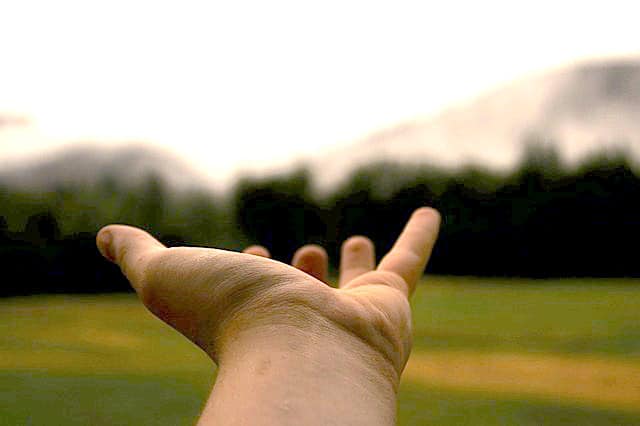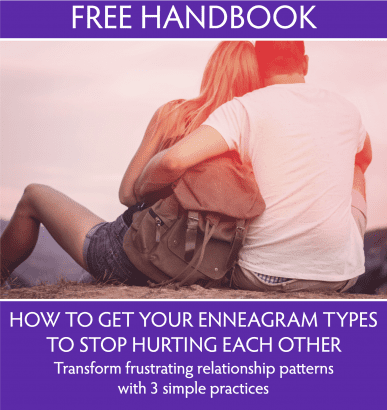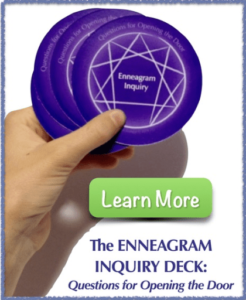“I am struck by how sharing our weakness and difficulties is more nourishing to others than sharing our qualities and successes.” –– Jean Vanier
Do you spend a lot of time in your significant relationships feeling disconnected, hurt, avoidant or frustrated? If so, you are not alone. We often don’t understand how to get back to the respect and connection we desire so deeply. After repeating a disturbing cycle with someone we care about yet again, we feel like crying out, “What is needed to shift this painful dance?”
Maybe you have have tried to find your way many times in good faith, and then many others in desperation. You wonder if the dynamic can ever change or whether the relationship is “meant to be” after all.
The vulnerability that love initiates us into can be tricky and complex territory. You can read as many articles as you like about the “5 Tips to a Happy Relationship,” and later that day find yourself hamstrung in version #56 of the classic repeating fight with your partner.
“IT SHOULDN’T HURT TO LOVE”
Cultural stereotypes of love suggest that our close relationships should be places where we feel support, validation, and pleasure, and that if they are not, that there is something wrong with one of us, or with the relationship itself. I disagree. Instead, I’d say there’s something right with love’s leading us to continue to grow past our old, brittle selves and to beckon us into a more expansive and free existence.
As poet Rainer Maria Rilke said:
“For one human being to love another human being: that is perhaps the most difficult task that has been given to us, the ultimate, the final problem and proof, the work for which all other work is merely preparation.”
When we feel the call to the authentic way of living that love invites, parts of our structure reflexively contract. We think: “No! People won’t like you if you’re selfish!” “If you open yourself so much, you’ll surely be burned.” “Don’t let them see you like this— you’ll lose them!” “Weakness and neediness are pathetic. You won’t be worth loving.”
Observing it cooly, we who know the Enneagram can recognize these messages as just part of our conditioning that is expected to arise when we’re reactive. But when “relational distress” is happening to us in the moment, our hearts are instantly in a vice, and we are on red alert for survival.
When we are already suffering, focusing on or admitting our vulnerability can sound like a horrible idea. When we are fearing rejection from the other, it can seem ludicrous.
Paradoxically, by moving through these deep levels that we usually avoid, we can finally find liberation and healing. It is here also where we develop our capacity for true intimacy with others.
Thriving relationships require our willingness to contact and tolerate our vulnerable feelings and fears.
THE ADVANTAGE OF THE ENNEAGRAM
As someone who appreciates the honesty needed to look frankly at your enneatype, you already have an advantage in this territory. You’ve already identified your mask. You acknowledge and accept that you have a type structure that tries to support or protect you in a certain way, and you know its core tenets. You understand that a main reason your type is there is to attempt to keep you away from the experience of things that have been intolerable or overwhelming in the past.
You may have also noticed that when you are not relying on your type’s view of the world, vulnerability often arises– perhaps asking to be met or integrated. Our ability to tolerate and stay in this zone is often tenuous at the beginning, but we can learn through experience that it not only becomes possible, but profoundly worth it.
Our meaningful relationships have very strong gravity, and pull us, without our consent, into these excruciating “opportunities.” And while our intense feelings may be barely tolerable in moments, they can be the vehicle that steers us through the pain and toward more freedom, presence and joy.
The places where our personality structure is most constricted can become the gateway to our experience of our essence. How can we untie the knot if we refuse to look at the shoelace? Rumi’s poem “The Guest House” alludes to this mysterious principle:
This being human is a guest house.
Every morning a new arrival.
A joy, a depression, a meanness,
some momentary awareness comes
as an unexpected visitor.
Welcome and entertain them all!
Even if they are a crowd of sorrows,
who violently sweep your house
empty of its furniture,
still, treat each guest honorably.
He may be clearing you out
for some new delight.
The dark thought, the shame, the malice.
meet them at the door laughing and invite them in.
Be grateful for whatever comes.
because each has been sent
as a guide from beyond.
I don’t know many people who are inclined or equipped to meet their violent sorrows “at the door laughing and invite them in.” After all, we’ve been defending against feeling these states for our whole lives. And even if we were ready to face them, Western culture tells us that turning toward our emotions is dangerous, pointless, pathetic, childlike, or irrational. It feels like there is a lot in the way of this congenial hosting Rumi speaks of.
If it can be this difficult to touch these tender aspects in ourselves, how much harder it is to reveal them to important others in our lives. It can feel like putting fragile seedlings out into potentially harsh weather.
I still have this dilemma in one of my classic conflicts with my husband. As a Nine, I can feel hurt and lonely when I start to believe that I’m unimportant to him. Also a Nine, I can act in ways that make it easy for him to be unaware of or to overlook my needs. When I finally feel enough hurt or anger about this, and I can’t suppress it anymore, I bring it forth. Because I’m desperate at that point, I don’t have access to my greatest skills, and it’s all I can do to just speak how miserable or exasperated I am. This usually lands like a ton of bricks and my husband freezes up in his own reactivity to feeling “not enough.”
When I’m in my desperate spot, I don’t like how I feel, and I don’t like how my husband is responding. I don’t want to stay there a minute more. I don’t want to feel unwanted, unresponded to, lost, incompetent, helpless, etc. My body, heart and mind are all grasping around for ways to get me out of the situation. They want to defend me from this torturous place where no clear path forward is visible. My type is angry that its strategy has fallen-down, and my inner critic is judging me for anything it can spot.
And over time, with support from my fellow-travelers and teachers, I have learned, and am still learning, to not abandon myself in this place, nor to grasp at my husband to rescue me. My growing ability to stay with my pain and look at– and then past– my defenses, has opened up in me such tenderness for the inner places that need my attention.
This willingness has also helped me to open to inner resources that can truly respond my needs. It has helped me to directly know my value, and has helped me to see how I repeatedly block myself from experiencing it. If I had vigilantly stayed away from this difficult terrain, as my enneatype would have me do, I would likely be imagining more strongly than ever that my husband truly doesn’t care about me, that I will be stuck here forever, and that my needs will never get met.
YEARNING FOR CONNECTION
According to Jett Psaris PhD and Marlena Lyons PhD, in their book Undefended Love, our hearts have a “dual yearning.” We yearn both for deep connection with another, and for deep connection with ourselves.
In relationships, we often look to the other to shore up insecurities in us. When they tell us we’re really wonderful, and not the imposter we’re afraid we are, then we feel better. This is not the type of connection that satisfies our yearning, however.
Although different gender, cultural, and life experiences will make us more or less comfortable seeking a deeper kind of intimacy, our souls all long to encounter ourselves and one another in a profound, unguarded, heart-to-heart way.
One of the ways the Enneagram points our way “home” to our true nature is by showing us what gets in the way of our experiencing this kind of immediacy and openness. When we become aware of these barriers, it becomes easier to recognize them in action and to loosen their grip on our experience.
Each type has predictable fears and beliefs that bar us from being present with ourselves and others in a fresh way. We default to our type’s pattered way of perceiving things. This feels less risky; it’s known at least, and therefore feels more predictable.
Consider some of the following ways in which each type defends against being truly present to themselves and others:
Type One: I block unfiltered input from my heart and belly which cuts me off from my own truth and vulnerability. I feel hard and cold. Others can’t feel my heart.
Type Two: I focus on the other and erase my needs. I can’t actually feel both of our hearts together when I’m stifling mine.
Type Three: I look outside myself for my value. When I live from here, no one’s truly home to relate and be related to.
Type Four: I look to the other to fulfill or rescue me. In this, I abandon myself, and it will feel that no one else can reach me.
Type Five: I seek to understand rather than experience. Withholding my presence makes it hard to feel myself or for anyone else to feel me.
Type Six: I jump out of the present into the future. There, I can’t feel the support and resources that are available in the present.
Type Seven: I’d rather not be present if it could include pain. Focusing on the positive possibilities, I veer away from the sweetness of my own and others’ tenderness.
Type Eight: I armor myself to protect my vulnerability, but then I don’t visit it or care for it. Shutting down this connection, I can lose my heart for myself and others.
Type Nine: I get diffuse to avoid the pain of potential disconnection. Then it’s hard to know my own heart or for others to truly connect with me personally.
Remember, these are predictable ways that our types function, convinced this is how we’ll get our needs met. We begin to see how they are failing at their mission as we see how they block us from experiencing connection, presence, and our true nature.
You could ask yourself the questions below, and see how willing you are to inquire within. If you’re feeling brave, see how long it’s possible to stay with anything that feels unusual or uncomfortable to you. The point is not to push yourself headlong or into overwhelm, but to put your foot an inch or two deeper into the water than you usually allow.
- How do my type patterns block me from the truth of my experience in the moment?
- How do my type patterns block me from unguarded contact with those I care about?
- Where might I be willing to open a little bit more to myself?
- What would be a tolerable risk in opening a little bit more to another?
Please share your reflections on the questions or post in the comments below!










4 Responses
Wow. This really spoke to me…. Thank you for this. C
Type Nine: I get diffuse to avoid the pain of potential disconnection. Then it’s hard to know my own heart or for others to truly connect with me personally.
I do not understand this sentence. Please can you explain a bit more clearly.
Thanks for the question, Karin. I’ll explain a bit more–let me know if I’m not clarifying the right part for you.
A strategy for 9 to stay connected is to not be too defined. Nines “diffuse” their energy to merge with what’s around them as a way to feel connected. This can also be called merging, fogging out or going with the flow. When Nine unconsciously dims her own flow or “collected” sense of self, others can wonder “Are you really here with me?” When others can’t sense the preferences or needs of the 9, they can feel hampered in their ability to know and love the 9.
The diffusion also can make it hard for Nines to recognize their own needs/preferences/hearts.
Hope that helps.
Never realised this about myself, thank you for the insight. Boundaries and communicating my needs definitely needs attention.